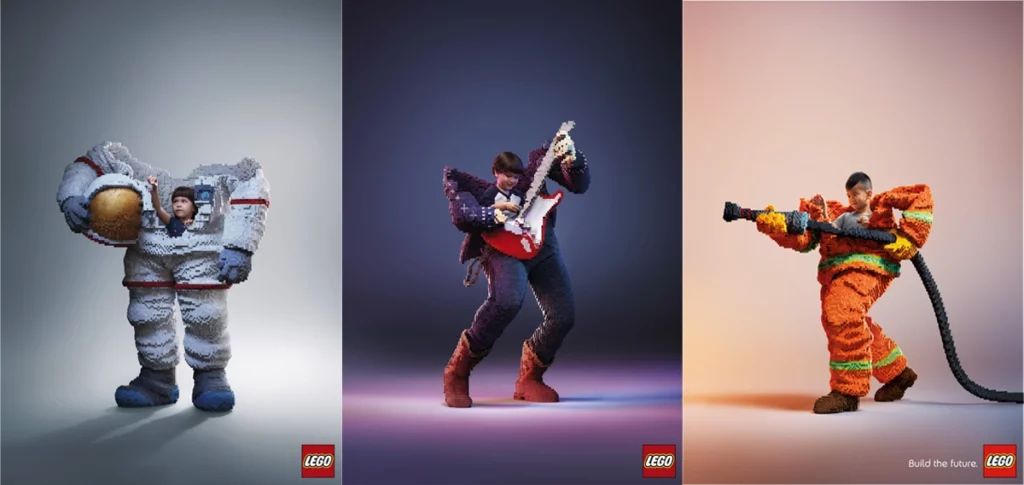In the ever-evolving landscape of social media, the art of narrative storytelling has become an indispensable tool for brands aiming to forge a compelling and lasting identity.
With fleeting attention spans and high content saturation, the need for a narrative that captivates and resonates with an audience has never been more critical.
But how do you actually go about creating a narrative campaign for social media that has a lasting impact? In this guide, we’ll look at the power of narrative storytelling, how it helps to forge emotional connections, some real-world examples, and then finally, how you can do it yourself.
Keep reading to learn how to harness the power of narrative storytelling!
The Power of Narrative Storytelling
Crafting a compelling brand identity on social media goes beyond flashy visuals and catchy slogans. It’s about creating a narrative that transcends the traditional post-content-and-run approach to social media, and connects with audiences on a deeper, much more emotional level.
Brands are no longer just entities; they are storytellers, and social media is their canvas, so to speak. With there being no limit to what you can create, so too, there’s no limit to the possibilities that narrative storytelling on social media can provide.
Emotional Connection Through Storytelling
To understand the importance of narrative storytelling, we must explore the emotional connection it fosters with audiences. Storytelling experts and brand strategists emphasise the impact of narratives in humanising brands.
By sharing authentic and relatable stories, brands can evoke emotions, whether it’s joy, empathy, or inspiration, creating a profound connection with their audience.
Experts advocate for narratives that not only showcase a brand’s products or services but also embody its values and ethos. This emotional resonance is a potent force, as it transforms passive followers into engaged advocates, fostering brand loyalty.
Storytelling in Marketing: Three Real-World Success Stories
We know why engaging your audience on an emotional level through narrative storytelling is so important, but do we know what this looks like in practice?
Below, we explore two real-world examples of narrative-driven marketing campaigns from LEGO and John Lewis.
LEGO’s Build the Future

LEGO’s Build the Future campaign (devised by Ogilvy & Mather) is a stellar example of how storytelling can be applied across various content types. Through a series of animated videos, LEGO crafted a narrative that showcased its commitment to sustainability and innovation, resonating with both children and adults.
We’ll go into this a little bit more later in the article, but what really makes the Build the Future campaign a hit was LEGO’s ability to help kids and adults put themselves into the narrative. We’ve all played with LEGO, and we all know the immensely satisfying feeling of clicking the little bricks together. LEGO played on this wonderfully.
John Lewis’ Christmas Campaigns
We couldn’t talk about advertising without discussing the event we all look forward to every year: The annual John Lewis Christmas Advert. In 2023, the ad was entitled Snapper: The Perfect Tree, and was created by Saatchi & Saatchi.
Consistently, these yearly ads play on the feeling of nostalgia, creating an emotional connection to the brand within their viewers. By playing on nostalgia, John Lewis can trigger an immediate emotional response, which then creates a bond between the viewer and the brand.
The psychological and emotional connection that John Lewis instils in its audience has created an army of fans who all excitedly look forward to their latest ad each year.
Techniques and Strategies
We’ve seen why and how narrative-driven social media campaigns create an emotional connection between the brand and the audience, plus we’ve looked at two real-world examples from John Lewis and LEGO.
Now it’s time to look at three essential ingredients for any narrative-driven marketing campaign. Successful narrative storytelling hinges on employing techniques that resonate with the audience:
- Relatable Characters: Introduce characters that embody the brand’s values and connect with the target audience. You saw this in the John Lewis ad, with there of course being the central character of the small boy, but also the host peripheral characters. If you didn’t relate to the boy, there’s a chance you related to some of the other character archetypes.
- Compelling Visuals: Utilise imagery and design elements that complement and enhance the narrative. If we think about the LEGO example, the three images of the kids building their future around them are very striking. Compelling visuals like this are essential.
- Authentic Voices: Let the brand’s personality shine through authentic and relatable voices, whether through user testimonials or brand ambassadors. You can take this to another level on social media, but utilising influencer and user-generated content.
Actionable Strategies
If you’re considering running a narrative-driven social media campaign on social media, here are some essential things to keep in mind as you work through it:
Story Arcs for Campaigns
Plan and execute social media campaigns with a defined story arc. Start with a captivating introduction, build tension through various posts, and conclude with a satisfying resolution.
We recommend thinking about your product/service and defining a key emotional selling point. Once you have that, you can begin to craft a social media campaign around this emotion.
Remember that the most important thing is to resolve your story arcs. Nobody likes a conflict or narrative that’s incomplete!
Interactive Storytelling
Engage the audience with interactive elements such as polls, quizzes, or videos that ask the viewers to participate. Doing this allows the audience to contribute to the unfolding narrative.
As author of the successful Building a StoryBrandDonald Miller said: Your customer should be the hero of the story, not your brand. This is the secret of every phenomenally successful business understands.
So when working on a narrative-driven marketing campaign, the focus should be on how you can make the viewer – the customer – a central part of the narrative. They should be able to see themselves in the campaign, and if possible, get involved too.
User-generated and Influencer Content
Encourage users to share their stories related to the brand. Feature user-generated content as part of the brand’s narrative, creating a sense of community. Remember that your audience should be able to relate to the narrative – and making use of user-generated and/or influencer content is a great way to do this.
If you’re considering working with influencers as part of your narrative storytelling campaign on social media, here’s how to choose the right influencers for your brand.
Conclusion
In the dynamic realm of social media, narrative storytelling emerges as the linchpin for building a compelling brand identity. Beyond aesthetics and slogans, it is the stories that resonate emotionally that leave an indelible mark on the audience.
Brands, equipped with narrative prowess, can cut through the noise, forging authentic connections and establishing an identity that stands the test of time. As we navigate the social media landscape of 2023, storytelling isn’t just a marketing strategy; it’s the backbone of brand identity.






